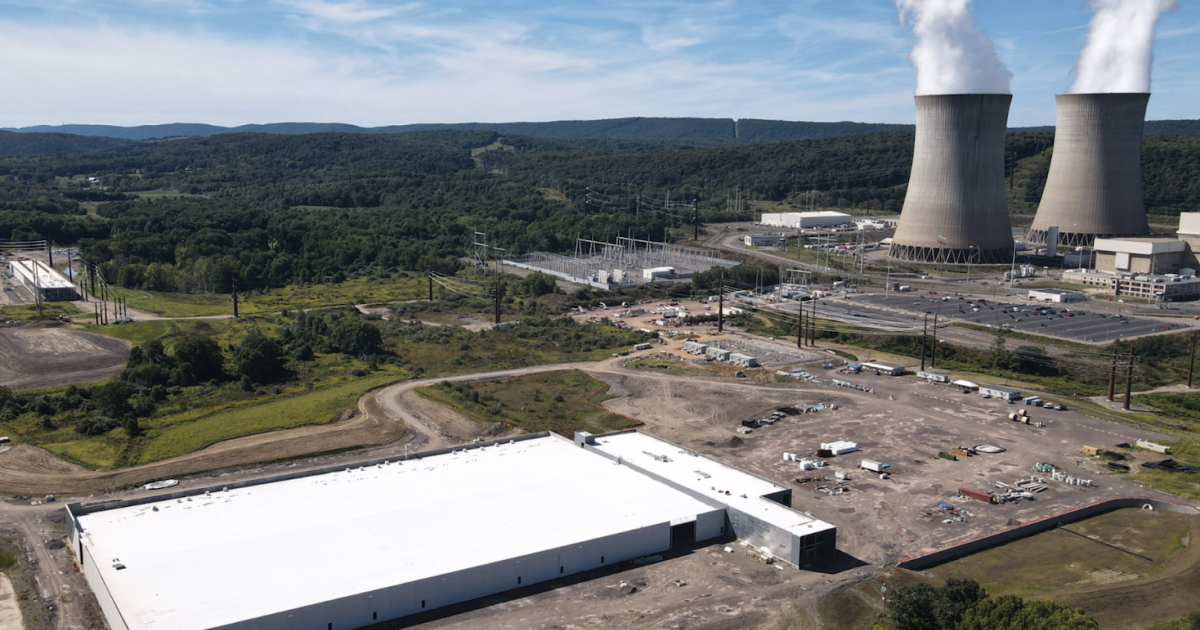Amazon, Google and Microsoft signal growing interest in nuclear, geothermal power
The push to commercialize artificial intelligence is swelling the electricity demands of the three biggest cloud computing companies — Amazon, Google and Microsoft — and they’re looking for carbon-free energy, including nuclear and geothermal, to reduce the greenhouse gas emissions from that growth.
In mid-March, Talen Energy announced a $650 million deal with Amazon Web Services to sell a data center powered by one of the largest U.S. nuclear plants. The Pennsylvania campus hosts a 48-megawatt computing facility, and Amazon plans to build a 960-megawatt campus there.
“To supplement our wind and solar energy projects, which depend on weather conditions to generate energy, we’re also exploring new innovations and technologies, and investing in other sources of clean, carbon-free energy,” Amazon said in a statement. “This agreement with Talen Energy is one project in that effort.”
New combination for alternative power sources
Microsoft and Google, meanwhile, announced a collaboration last week to buy electricity generated by geothermal, clean hydrogen, battery storage and advanced nuclear technologies. They’ve teamed up with steelmaker Nucor to find projects they can buy into when they’re up and running.
All 3 technology powerhouses need to find new sources of renewable or zero-carbon energy that can operate reliably around the clock.
“Scaling advanced clean technologies requires significant investment, but the novelty and risk of early projects often make it difficult for them to secure the financing they need,” wrote Maud Texler, Google’s director of clean energy and decarbonization development, in a blog on the company’s website. “Aggregating the demand of multiple large clean energy buyers helps enable the investments and commercial structures that are needed to bring these projects into the market.”
AI’s electricity appetite
Data centers and the communications networks supporting them account for 2-3 percent of annual global power consumption, according to the International Energy Agency. That load could triple by 2030, because generative AI requires a huge amount of processing power, predicts Boston Consulting Group.
Amazon, Google and Microsoft have already invested in hundreds of solar and wind power projects to power their expanding data center portfolios. Google this week added a 400-megawatt power purchase contract to support its $1 billion new data center in Kansas City, Missouri. Microsoft disclosed a smaller deal in Illinois. Amazon is the largest corporate backer of renewable energy, with more than 500 projects on its balance sheet, representing 77,000 gigawatt-hours annually when fully operational.
All three technology powerhouses need to find new sources of renewable or zero-carbon energy that can operate reliably around the clock if they are to meet their ambitious emissions reductions goals. At the same time, interconnection delays and grid capacity challenges are making it tougher for companies interested in carbon-free energy to rely on utility-scale wind and solar projects to offset that demand.
“The buying scale and huge consumption of energy by data centers means that both renewable and traditional energy supply is becoming challenged at a local level — and the authorities have noticed,” said Richard Pritchard, principal analyst for enterprise technology and services at research firm Global Data, in a recent report. “Future planning for data center roll-out may be constrained by these concerns.”
Power direct from the source
Large tech corporations are getting around the current gridlock by building data centers in tandem with fossil fuel-free power sources that serve them directly, said Andrew Beebe, managing director for climate-tech venture capital firm Obvious Ventures. “You will see data centers start to site power plants either inside their fence line or right next to it,” he said.
By avoiding the need to connect to the grid or build new high-voltage transmission lines over long distances, companies can get those facilities up and running more quickly.
By avoiding the need to connect to the grid or build new high-voltage transmission lines over long distances, companies can get those facilities up and running more quickly, Beebe said.
For example, Google helped Fervo Energy develop a “first of its kind” enhanced geothermal power plant in Nevada to serve the local grid that powers its data centers. Geothermal represents only a small portion of U.S. electricity generation but could provide up to 120 gigawatts of power by 2050, according to projections by the U.S. Department of Energy.
AI in the hunt for clean energy
Artificial intelligence, the same technology pushing energy consumption higher, is starting to help find and develop geothermal resources. Two companies to watch are Zanskar, which uses AI to find anomalies that help identify commercial geothermal resources, and Quaise, which is advancing drilling technology, Beebe said. “The methods of getting this energy to the top are well-known,” he said. “You just need to know where it is. That is the expensive part.”
Google and Microsoft are also both betting on nuclear fusion, in theory a safer, less polluting and essentially inexhaustible alternative to today’s nuclear fission plants.
Google is an investor in TAE Technologies, a fusion venture that has raised $1.2 billion from investors. Microsoft signed a contract to buy electricity from a plant being built by Helion once it starts generating power in 2028. And Nucor has a deal with Helion to build a plant that will directly power one of its steelmaking facilities, reducing its emissions by an estimated 500,000 metric tons annually.

